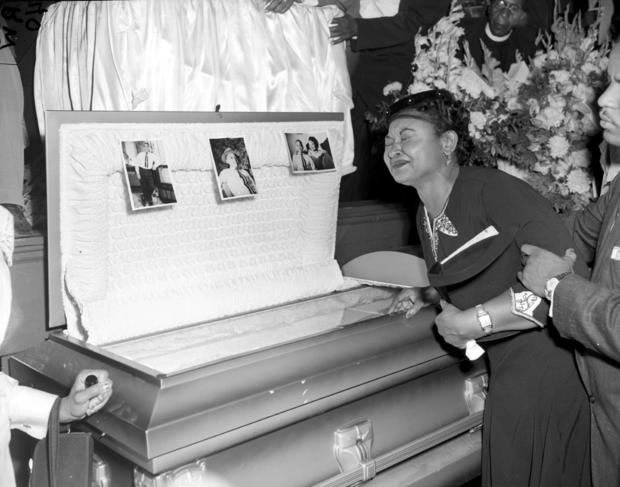How Emmett Till's brutal death "ignited a movement" in America
The U.S. Supreme Court had outlawed legal segregation in 1955, but blacks were living living under a reign of terror.
That year, a teenage boy became the latest victim of it. His story may have been lost to history, if not for his mother’s decision to expose his brutal death, reports CBS News correspondent Michelle Miller.
Before the protest in Charlotte and Ferguson, or the chants of Black Lives Matter, there was the story of Emmett Till.
It started when the 14-year-old walked into a Mississippi general store with his cousins.
“Emmett said nothing out of line. Mrs. Bryant came out behind us. Emmett whistled at her. Wolf whistle,” said his cousin, Simeon Wright, imitating the sound.
“Why did he do that?” Miller asked.
“Ah. I tell people, I say, ‘I think he wanted us to laugh,’” Wright said.
Police found Emmett’s body floating in a river seven days later -- so badly beaten that his mother, Mamie Till Mobley, could barely identify him.
A young filmmaker named Keith Beauchamp interviewed Mobley 16 years ago, shortly before her death.
“I saw his tongue had been choked out and it was lying down on his chin,” she told him. “This eye was out and it was lying about mid-way the cheek. I discovered a hole. And I said, ‘Well, was it necessary to shoot him?’”
In the midst of grief, disbelief and horror, Mobley made the decision to expose her only child to the world. Photos of his body in an open casket were published in the black press.
“I said I want the world to see this because, there is no way I could tell this story and give them the visual picture of what my son looked like,” Mobley said.
“It’s unbelievable that someone can do that to another human being,” Wright said. “It just put in your mind how evil those people were.”
“Those black people in the deep South -- this was finally testimony to what they endured,” said Michael Dyson, a Georgetown University sociology professor. “It was meant to make them stay in their places. Instead, it ignited a movement.”
- Justice, Delayed But Not Denied
- Key witness to 1955 Emmett Till murder dies at 76
- FBI: Emmett Till Probe Complete
Rosa Parks said it was Till’s face she saw when refusing to give up her seat on an Alabama bus. Martin Luther King Jr. summoned his memory during the Montgomery Bus Boycott.
“This one image conjured the pain, the acrimony of lynching, and showed to America, ’This is what you do to us. This is evil,’” Dyson said.
“You cannot have justice without truth,” Beauchamp said.
Beauchamp has spent the last 25 years on a quest for both, unearthing new details about Till’s death that he’s revealing in an upcoming feature film. It’s his chance to finally tell the complete story.
“When you see that photo and you juxtapose it against the video of Rodney King, Alton Sterling, and Philando Castile and Eric Garner, Tamir Rice, does it still have the same impact?” Miller asked.
“There’s no other story in civil rights history that will speak to this generation than the story of Emmett Till,” Beauchamp said.
No one was ever convicted of Till’s murder, but his mother believes his legacy has become his justice.
“It took something to stir people up and let them know we are either going to stand together, or we’re going to fall together,” Mobley said.
Beauchamp’s reporting led the FBI to reopen the case. In 2005, Till’s body was exhumed, but his casket was left forgotten, until a family member found it and donated it to the Smithsonian’s new National Museum of African American History and Culture.

